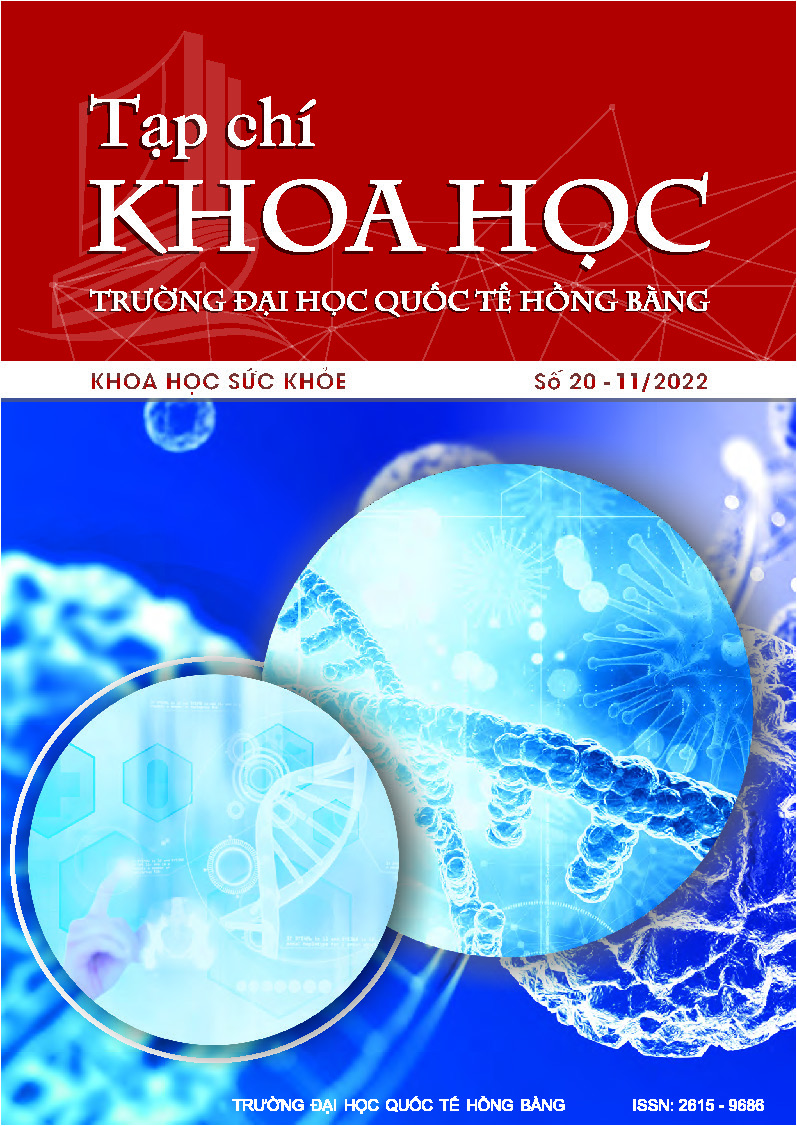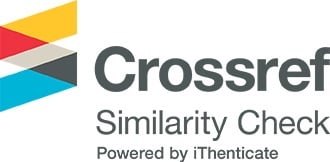Đánh giá hoạt tính kháng khuẩn, kháng nấm và nghiên cứu docking phân tử một số dẫn xuất N-benzyl 2-arylbenzimidazol
Các tác giả
Từ khóa:
Benzimidazol, kháng khuẩn, kháng nấm, docking phân tửTóm tắt
Một nhóm các dẫn xuất N-benzyl 2-arylbenzimidazol đã được tổng hợp. Các hợp chất này được sàng lọc hoạt tính in vitro kháng khuẩn và kháng nấm bằng kỹ thuật vi pha loãng. Hợp chất 2c và 2f thể hiện hoạt tính kháng khuẩn tốt trên chủng MSSA và MRSA (MIC 4 - 16 µg/mL). Hợp chất 2a thể hiện hoạt tính kháng khuẩn mạnh trên chủng MSSA và MRSA (MIC 4 µg/mL) và hoạt tính kháng nấm tốt trên chủng Aspergillus niger (MIC 64 µg/mL) khi so sánh với hoạt tính của thuốc ciprofloxacin và fluconazol. Các hợp chất tổng hợp cũng được nghiên cứu docking phân tử trên ba đích tác dụng bao gồm glucosamine-6-phosphat synthase, topoisomerase II và DNA gyrase. Nghiên cứu docking phân tử đã hỗ trợ giải thích hoạt tính kháng khuẩn và kháng nấm thông qua sự hình thành liên kết hydro và ái lực cao.
Abstract
A novel series of N-benzyl 2-arylbenzimidazole derivatives were synthesized. These compounds were screened for in vitro antibacterial and antifungal activities by the micro-broth dilution technique using nutrient broth. Compounds 2c and 2f showed good antibacterial activity against MSSA and MRSA (MIC range: 4 - 16 µg/mL). Compound 2a showed excellent antifungal activity against MSSA and MRSA (MIC 4 µg/mL), and good antifungal activity against Aspergillus niger (MIC 64 µg/mL), which is comparable to the activity of ciprofloxacin and fluconazole. The synthesized compounds were subjected to molecular docking studies with three proteins, namely glucosamine-6-phosphate synthase, topoisomerase II, and DNA gyrase. The molecular docking studies have supported the explanation of antibacterial and antifungal activities through hydrogen bond formation and high affinity.
Tài liệu tham khảo
[1] K. L. Mason, J. R. Erb Downward, K. D. Mason, N. R. Falkowski, K. A. Eaton, J. Y. Kao, V. B. Young and G. B. Huffnagle, “Candida albicans and bacterial microbiota interactions in the cecum during recolonization following broad-spectrum antibiotic therapy,” Infection and immunity, vol. 80, pp. 3371-3380, 2012.
[2] H. Göker, M. Alp and S. Yıldız, “Synthesis and potent antimicrobial activity of some novel N-(alkyl)-2-phenyl-1H-benzimidazole-5-carboxamidines,” Molecules, vol. 10, pp. 1377-1386, 2005.
[3] H. Sören, “Antibiotic resistance - why is the problem so difficult to solve?,” Infection ecology & epidemiology, vol. 2, 2012.
[4] K. Klobucar and E. D. Brown, “New potentiators of ineffective antibiotics: Targeting the Gram-negative outer membrane to overcome intrinsic resistance,” Current Opinion in Chemical Biology, vol. 66, p. 102099, 2022.
[5] D. Sharma, B. Narasimhan, P. Kumar and A. Jalbout, “Synthesis and QSAR evaluation of 2-(substituted phenyl)-1H-benzimidazoles and [2-(substituted phenyl)-benzimidazol-1-yl]-pyridin-3-yl-methanones,” European Journal of Medicinal Chemistry, vol. 44, pp. 1119-1127, 2009.
[6] A. A. Farahat, E. Paliakov and A. Kumaretal, “Exploration of larger central ring linkers in furamidine analogues: synthesis and evaluation of their DNA binding, antiparasitic and luorescence properties,” Bioorganic & Medicinal Chemistry, vol. 19, pp. 2156-2167, 2011.
[7] Y. F. Li, G. F. Wang, P. L. He, W. G. Huang, F. H. Zhu, H. Y. Gao, W. Tang, Y. Luo, C. L. Feng, L. P. Shi, Y. D. Ren, W. Lu and J. P. Zuo, “Synthesis and anti-hepatitis B virus activity of novel benzimidazole derivatives,” Journal of Medicinal Chemistry, vol. 49, pp. 4790-4794, 2006.
[8] J. Chen, Z. Wang, C. M. Li, Y. Lu, P. K. Vaddady, B. Meibohm, J. T. Dalton, D. D. Miller and W. Li, “Discovery of novel 2-aryl-4-benzoyl-imidazoles targeting the colchicines binding site in tubulin as potential anticancer agents,” Journal of Medicinal Chemistry, vol. 53, pp. 7414-7427, 2010.
[9] G. N. Vazquez, L. Yepez and A. H. Camposetal, “Synthesis and antiparasitic activity of albendazole and mebendazole analogues,” Bioorganic & Medicinal Chemistry, vol. 11, pp. 4615-4622, 2003.
[10] P. C. Em, T. N. Tuyen, D. H. Nguyen, V. D. Duy and D. T. Hong Tuoi, “Synthesis of a series of novel 2-amino-5-substituted 1,3,4-oxadiazole and 1,3,4-thiadiazole derivatives as potential anticancer, antifungal and antibacterial agents,” Medicinal Chemistry, vol. 18, pp. 558-573, 2022.
[11] S. Milewski, “Glucosamine-6-phosphate synthase - the multi-facets enzyme,” Biochim Biophys Acta, vol. 1597, 173-192, 2002.
[12] D. Steverding, P. Evans, L. Msika, B. Riley, J. Wallington and S. Schelenz, “In vitro antifungal activity of DNA topoisomerase inhibitors,” Medical Mycology, vol. 50, pp. 333-336, 2012.
[13] Y. C. Tse-Dinh, “Bacterial topoisomerase I as a target for discovery of antibacterial compounds,” Nucleic Acids Research, vol. 37, pp. 731-737, 2009.
[14] S. N. Dighe and T. A. Collet, “Recent advances in DNA gyrase-targeted antimicrobial agents,” European Journal of Medicinal Chemistry, vol. 199, p. 112326, 2020.
[15] F. Collin, S. Karkare and A. Maxwell, “Exploiting bacterial DNA gyrase as a drug target: current state and perspectives,” Applied Microbiology and Biotechnology, vol. 92, pp. 479-497, 2011.
[16] K. Gullapelli, G. Brahmeshwari, M. Ravichander and U. Kusuma, “Synthesis, antibacterial and molecular docking studies of new benzimidazole derivatives,” Egyptian Journal of Basic and Applied Sciences, vol. 4, pp. 303-309, 2017.
[17] Phạm Cảnh Em, Đỗ Thị Thúy và Trương Ngọc Tuyền, “Tổng hợp, hoạt tính ung thư và nghiên cứu docking một số dẫn chất N-benzyl 2-arylbenzimidazol”, Tạp chí Y Dược học Việt Nam, vol. 17, pp. 33-41, 2021.
Tải xuống
Tải xuống: 84







